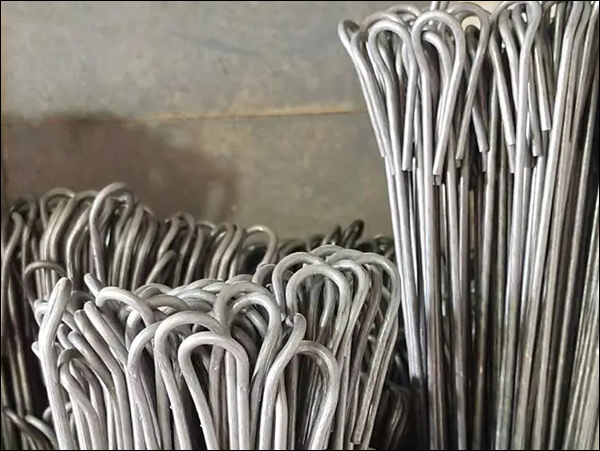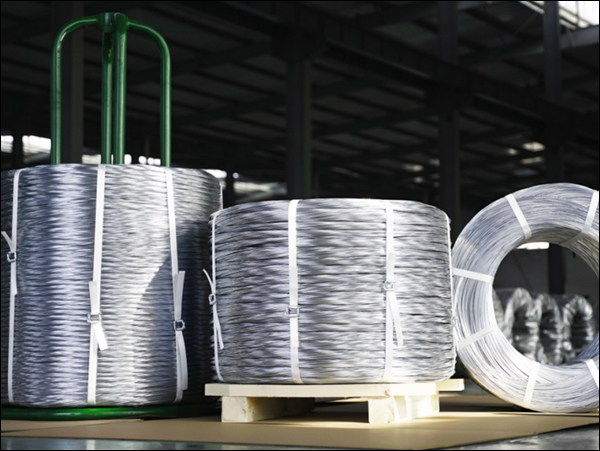Annealed Wire for Packaging and Bundling Metal Scrap Materials
Annealed Wire for Packaging and Bundling Metal Scrap Materials is a crucial tool in the recycling industry, designed to provide secure and reliable binding solutions for various metal scraps, including steel, aluminum, copper, and more. This wire is specially annealed to enhance its flexibility and strength, ensuring that it can withstand the rigors of transporting and storing heavy and irregularly shaped metal materials. Its soft yet durable nature allows for easy application, whether manually or with automated baling equipment, reducing the risk of wire breakage and ensuring that metal bales remain tightly bound during handling. Ideal for use in high-volume recycling operations, this wire is available in a range of sizes to accommodate different baling needs, making it an efficient and cost-effective choice for scrap metal bundling.
Material Types of Annealed Binding Wires for Scrap Metal Bales
Black Annealed Wire
Black Annealed Wire is widely used for packing metal scrap materials due to its flexibility and ease of use. Manufactured from low carbon steel wire, it undergoes an annealing process that enhances its pliability, making it ideal for binding irregularly shaped scrap metal. This wire is available in various gauges, typically ranging from 16 to 22 AWG, which corresponds to diameters of 1.2 mm to 0.6 mm. The versatility in gauge options allows users to select the appropriate wire thickness based on the specific requirements of the metal bales.
- Material: Low Carbon Steel
- Gauge Range: 16 to 22 AWG (1.2 mm to 0.6 mm)
- Surface Finish: Black annealed
- Typical Applications: Packaging and bundling of metal scrap, including steel, aluminum, and copper.
Galvanized / Bright Annealed Wire

Galvanized or Bright Annealed Wire features a protective zinc coating that offers superior resistance to corrosion, making it particularly suitable for outdoor applications. This wire is designed to withstand harsh environmental conditions, including exposure to moisture and varying temperatures, ensuring that the bundled metal scraps remain securely bound during transportation and storage. The wire is available in different gauges, providing options for various levels of strength and flexibility needed in metal scrap packing.
- Material: Low Carbon Steel with Zinc Coating
- Gauge Range: Commonly available in a range of gauges (e.g., 16 to 20 AWG)
- Surface Finish: Galvanized / Bright annealed
- Corrosion Resistance: High, suitable for outdoor use
- Typical Applications: Securing metal scrap bales in environments with high moisture or exposure to the elements.
High-Tensile Annealed Wire

High-Tensile Annealed Wire is engineered from high-strength steel wire, offering exceptional tensile strength combined with the flexibility needed to securely bind heavy and dense metal scraps. This wire is ideal for applications that require robust binding solutions to ensure that large, heavy bales of metal scraps are held together during handling and transport. The high-tensile strength of this wire makes it resistant to breaking or deforming under substantial loads.
- Material: High-Strength Steel
- Tensile Strength: High, suitable for heavy-duty applications
- Gauge Range: Customizable based on specific needs
- Surface Finish: Black or bright annealed
- Typical Applications: Binding and securing heavy metal scrap bales for transportation and storage.
Additional Dimensions and Data
- Coil Dimensions:
Internal Diameter: 500 mm to 600 mm
External Diameter: 800 mm to 900 mm
- Height: 800 mm to 1000 mm
- Weight per Coil: Typically 1000 kg, with custom weights available upon request.
- Packaging: Orbit coils or spools, designed for ease of handling and integration into automated systems.
Binding Forms
Loop Binding
Loop binding is a widely used technique for securing metal scrap bundles. This method involves creating loops or twists in the annealed wire to tightly secure the metal scraps.
- Measure and Cut: Begin by cutting a length of annealed wire that suits the size of your scrap bundle.
- Initial Loop: Hold one end of the wire against the bundle and create a loop or twist around it.
- Thread and Tighten: Pass the free end of the wire through the loop or twist.
- Secure: Pull the wire tightly to secure the bundle, and twist the ends together to complete the binding.
Double Loop Binding
Double loop binding is a more robust technique that adds extra stability to metal scrap bundles by using two loops or twists.
- Measure and Cut: Cut a length of annealed wire based on the bundle size.
- First Loop: Hold one end of the wire against the bundle and create the first loop or twist.
- Thread and Repeat: Pass the free end of the wire through the first loop or twist. Then, create a second loop or twist adjacent to the first.
- Secure: Pass the free end of the wire through the second loop or twist, pull tightly, and twist the ends together to ensure the bundle is firmly bound.
Binding Tools
- Binding Pliers:
Binding pliers are specialized tools designed for wire binding applications. These pliers are equipped with a built-in cutter, gripper, and wire twister, allowing for precise and efficient binding of metal scrap bundles.
- Wire Twisters: Wire twisters are handheld tools used to create secure twists in annealed wire. They help produce tight and consistent twists, ensuring strong and reliable binding of metal scraps.
- Wire Cutters:
Wire cutters are essential tools for cutting annealed wire to the required length. They are durable and capable of cutting through wire with ease, making them a crucial part of the binding process.
Applications
- Metal Scrap Yards:
In metal scrap yards, annealed wire is essential for binding and securing scrap metal materials into manageable bundles. This practice facilitates efficient handling, transportation, and storage of metal scraps.
- Recycling Centers:
Recycling centers utilize annealed wire to pack metal scrap materials for recycling. The securely bound bundles ensure safe transport and processing of the metal scraps.
- Manufacturing Facilities:
Manufacturing facilities that generate metal scrap as a byproduct of their production processes rely on annealed wire for efficient packing and disposal. This practice helps streamline waste management and maintain a clean and organized workspace.
- Construction Sites:
Construction sites, particularly those involved in demolition or renovation, often produce large quantities of metal scrap. Annealed wire is used to pack and dispose of these scraps effectively, minimizing the risk of accidents and enhancing site safety.

